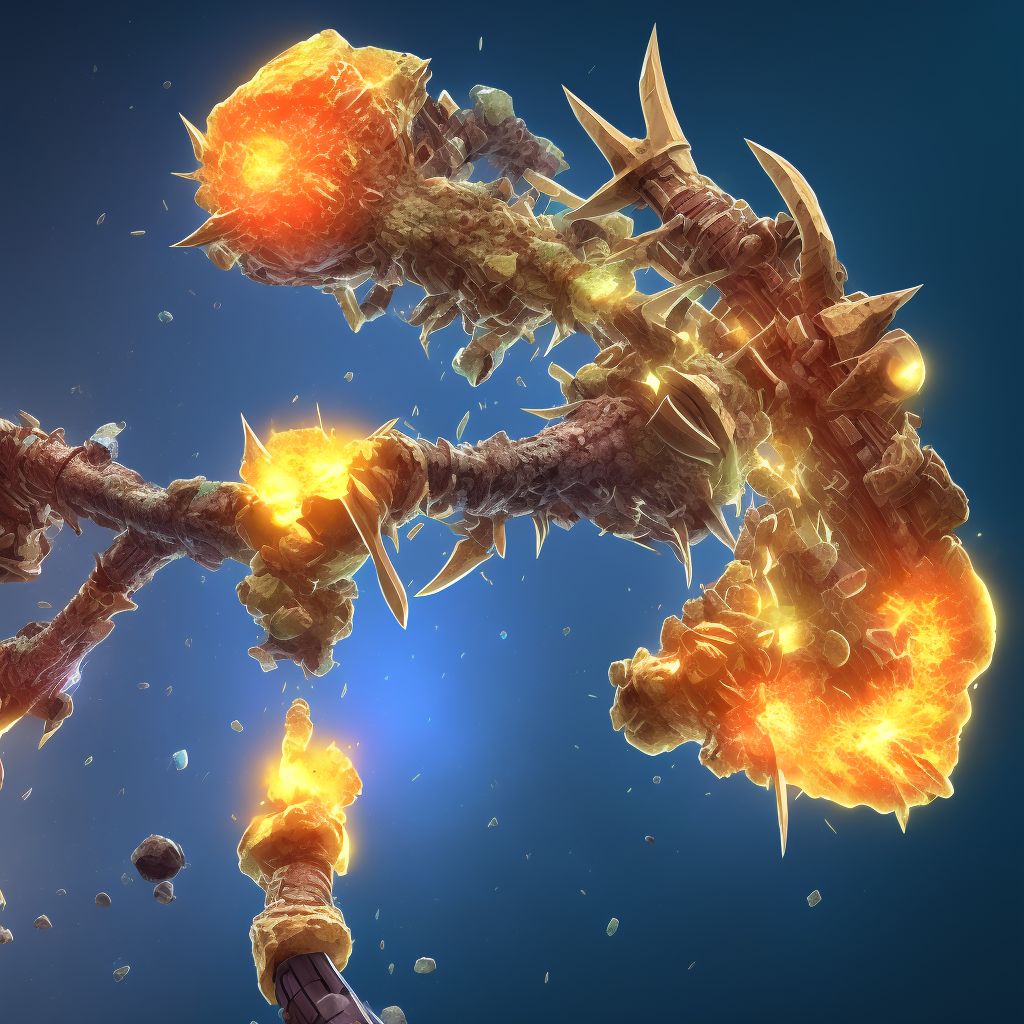
Unspecified fracture of shaft of left tibia, subsequent encounter for open fracture type I or II with malunion Save
ICD-10 code: S82.202Q
Disease category: S82.202: Unspecified fracture of shaft of left tibia
Understanding Unspecified Fracture of Shaft of Left Tibia, Subsequent Encounter for Open Fracture Type I or II with Malunion
An unspecified fracture of the shaft of the left tibia refers to a fracture in the long bone of the lower leg, specifically the tibia. This type of fracture is characterized by the absence of specific information regarding the location or severity of the fracture. When the fracture is classified as an open fracture type I or II with malunion, it means that the fracture was initially treated as an open fracture and has now healed with a misalignment or deformity.
Fractures of the tibia can occur due to various reasons such as trauma, accidents, sports injuries, or overuse. They can range in severity from minor hairline fractures to complex fractures that require surgical intervention. The unspecified nature of this fracture indicates that further details about the fracture, such as the exact location or the extent of displacement, are not provided.
When a fracture is classified as an open fracture type I or II, it means that the fracture has penetrated the skin or has caused a wound. Open fractures can carry a higher risk of infection and often require immediate medical attention to prevent complications.
Malunion refers to the improper healing of a fracture, resulting in a misalignment or deformity. In the case of an unspecified fracture of the shaft of the left tibia with malunion, the fracture has healed but has not aligned correctly, leading to a visible deformity or functional impairment.
- Symptoms: Common symptoms associated with this type of fracture include pain, swelling, bruising, difficulty bearing weight, and an abnormal appearance of the affected leg.
- Diagnosis: To diagnose an unspecified fracture of the shaft of the left tibia with malunion, a healthcare professional will typically conduct a physical examination, review the patient's medical history, and may order imaging tests such as X-rays or CT scans.
- Complications: If left untreated, an unspecified fracture of the shaft of the left tibia with malunion can cause long-term functional limitations, chronic pain, and an increased risk of developing arthritis in the affected joint.
In conclusion, an unspecified fracture of the shaft of the left tibia, subsequent encounter for open fracture type I or II with malunion, refers to a fracture in the lower leg bone that has healed with misalignment or deformity. Proper diagnosis and treatment are crucial to ensure optimal recovery and minimize future complications.
Treatment of Unspecified fracture of shaft of left tibia, subsequent encounter for open fracture type I or II with malunion:
Treatment Options for Unspecified Fracture of Shaft of Left Tibia, Subsequent Encounter for Open Fracture Type I or II with Malunion
If you have been diagnosed with an unspecified fracture of the shaft of your left tibia, subsequent encounter for an open fracture type I or II with malunion, it's essential to understand the available treatment options. These fractures can be complex...
To see full information about treatment please Sign up or Log in